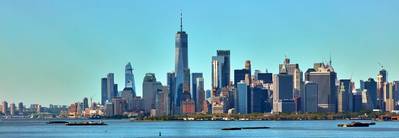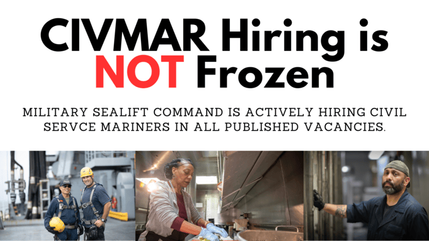NYC Exploring Ways to Move More Freight Via Waterways
New York City is looking at ways to help shift freight transportation off of its busy roads and onto the waterways.
The city's Department of Transportation (NYC DOT) and Economic Development Corporation (NYCEDC) on Wednesday jointly released a Request for Information and Expressions of Interest (RFEI) seeking private sector feedback to help it gauge industry challenges and opportunities, and explore ways to implement and support businesses to engage in waterfront freight operations.
The initiative is part of NYC's "Blue Highways" program, launched under the city's previous mayor, Bill de Blasio. Officials say they are now seeking "creative solutions" to reactive waterways for safer, greener freight deliveries that will reduce congestion on roads in NYC and its surrounding areas.
"New York is a city of islands, but its waterways carry less than 10% of freight. Through this initiative we're aiming to increase the cleaner movement of goods across the city," said Deputy Mayor for Operations Meera Joshi. "The private sector is essential to achieving an impactful modal shift and we look forward to collaborating on actionable steps to reactivate our marine highway."
"Reactivating our waterways for the movement of goods can help reduce the city's reliance on large trucks, cutting down on congestion and emissions," said NYC DOT Commissioner Ydanis Rodriguez. "With a city coastline stretching longer than Miami, Boston, Los Angeles and San Fransisco combined, there is an exciting opportunity to develop a regional freight network to move our goods more safely and efficiently. We look forward to working with our partners at the EDC and the private sector to better understand how to support businesses interested in marine freight."
"New York City is surrounded by waterways that are ripe for innovative possibilities to reduce dependency on trucks," said NYCEDC President & CEO Andrew Kimball. "The Blue Highways initiative is an exciting opportunity to activate our waterways and partner with the private sector on strategies to implement waterfront freight operations."
The initiative builds on the recommendations in PlaNYC: Getting Sustainability Done and the "New" New York Panel's Making New York Work for Everyone, which calls to expand the city's use of its waterways for freight.
The city said it will use the RFEI to help determine the feasibility of launching a marine freight pilot program, and based on the level of responses, it may choose to invest in modernizing its marine terminals and expanding access to maritime shippers and receivers.
Officials said the city will also target additional federal funding opportunities to support its Blue Highway initiatives. In 2022, NYC secured over $5 million to improve marine freight service and bolster New York City's marine highway.
"Expanding local deliveries on the water is the natural next step in reimagining how we move goods in a dense urban environment. As we lead the busiest shipping port on the East Coast, we are already well-versed in the dependability of maritime cargo movement," said Bethann Rooney, port director at the Port Authority of New York and New Jersey. "We stand ready to work with the city to take full advantage of the efficiency, reliability, and environmental sustainability our waterways can offer to keep goods flowing."
"Diversifying freight movement and improving our region's economic competitiveness through the Blue Highway program will provide resiliency to the transportation system. The Blue Highway program will create and sustain jobs contributing to the nation's strategic sealift command," said Stephen Lyman, Executive Director for the Maritime Association of the Port of NY/NJ. "The reduction of landside traffic congestion will add new freight and passenger transportation capacity, a reduction on greenhouse gas emissions, and reduce wear-and-tear on roads and bridges."
"New York City is surrounded by water, built because of the water, and has thrived because of the water! Throughout our history, we have depended on the water to move people, goods, and connect us to the world. We must now look back to the water to help solve some of our most urgent challenges to reduce truck traffic and congestion, emissions reduction, and climate change mitigation," said Michael Stamatis, President and CEO, Red Hook Terminals. "Maintaining and modernizing our existing port infrastructure and building new port infrastructure for the movement of goods into and around the city on our blue highways will be imperative. We fully support and applaud the NYCDOT and NYCEDC's efforts to develop an environmentally friendly and sustainable freight mobility system using our greatest natural resource."
"With freight tonnage expected to increase 68% over the next 20 years, collaboration amongst all modes of transportation is critical to improving the efficiency of freight movement within New York City. Utilizing the waterways to provide another option for freight transportation makes sense," said Kendra Hems, President of the Trucking Association of New York. "TANY looks forward to continuing to work with our partners at the Department of Transportation and Economic Development Corporation on this important project."













